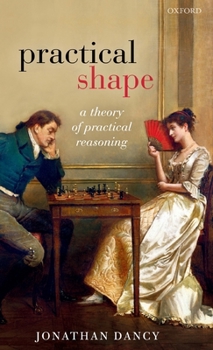Practical Shape: A Theory of Practical Reasoning
Select Format
Select Condition 
Book Overview
It is widely accepted that we can reason to a new belief from beliefs that we already have. Aristotle thought that we could also reason from beliefs to action. Many philosophers have disregarded Aristotle's claim, but Jonathan Dancy aims to establish the possibility of reasoning to action, by showing how similar such reasoning is to reasoning to belief. He offers a general theory of reasoning which is Aristotelian in spirit, and which smoothly admits the differences there may be between reasoning to action and reasoning to belief, while also considering the possibility of reasoning to hope, to fear, to doubt, and to intention.
Format:Hardcover
Language:English
ISBN:0198805446
ISBN13:9780198805441
Release Date:September 2018
Publisher:Oxford University Press
Length:200 Pages
Weight:0.95 lbs.
Dimensions:0.9" x 5.4" x 8.6"
Customer Reviews
3 customer ratings | 3 reviews
There are currently no reviews. Be the first to review this work.





















